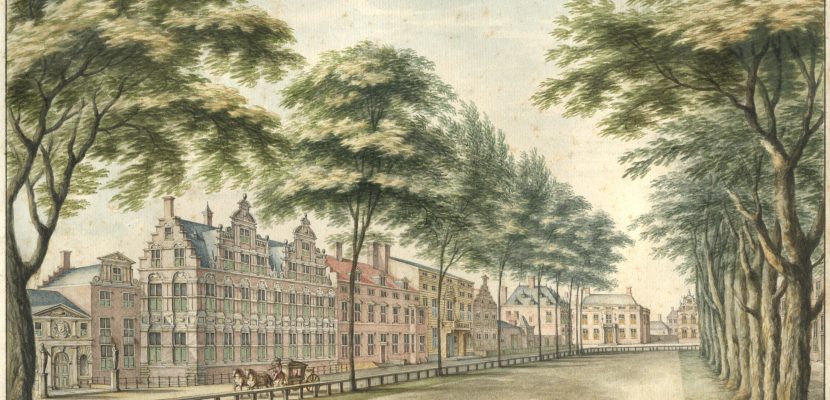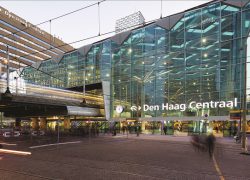The Hague’s Birthday Celebration
Starting in 2022, The Hague will celebrate its birthday annually. The Hague Municipal Archives congratulates the city with a special exhibition in De Galerij, located at Spui Station in the tram tunnel. The exhibition takes visitors through the history of The Hague — from a sparsely inhabited area to an international city of peace and justice.
The First Mention of The Hague
On September 6, 1242, Count William II issued a charter in “die Haga”. This is the oldest written record of The Hague. The text of Count William II’s deed is actually of lesser importance to The Hague itself; it concerns people who bought peatland near the river Rotte and were required to dig ditches in the same pattern as other landowners — a regulation on peat drainage and water management. The most significant part of the charter, of course, is that first mention of The Hague as Die Haga.
Slow Growth from Small Settlement to City
The Hague owes its origin to the Haagse Bos (The Hague Forest). Because the count liked to hunt there, he built his castle nearby. It was not until the 17th century that the Haagse Bos became a walkable recreational area. Count Floris V, son of William II, expanded the castle and developed the surrounding lands into a village with its own administration — Haagambacht.
For a long time, The Hague consisted of little more than the court and the village surrounding the Grote Kerk (Great Church). At the edge of the peatlands lay the harbor and industrial area. The modest town was surrounded by forest, peat, and polderland.
Improved Employment and Infrastructure
With the construction of the Trekvliet, The Hague gained an important waterway connection to the interior, boosting local employment.
The Turfhaven was built for transporting fuel, accelerating the city’s growth, particularly around the Spui area. The construction of the Scheveningseweg — designed by Constantijn Huygens — was considered a true marvel of its time. This was the first paved and perfectly straight road outside a built-up area in the Netherlands, cutting through wild dunes and linking the fishing village of Scheveningen and the sea to The Hague.
Royal City
Since 1815, The Hague has been the residence of kings and queens of the House of Orange-Nassau. Before that, counts and stadtholders lived at the Binnenhof or in one of the palaces they built or purchased.
- Paleis Noordeinde has been associated with the Orange family since 1591.
- Paleis Huis ten Bosch was built in 1645 by order of Stadtholder Frederik Hendrik and his wife Amalia van Solms.
- In 1764, the Frisian deputy built a house on the Lange Voorhout, purchased in 1845 by King William II, who turned it into a city palace.
- In 1816, King William I bought Paleis Kneuterdijk, built a century earlier to a design by the famous architect Daniël Marot.
Government City
As early as the Middle Ages, The Hague was an important administrative center. It housed the court of the Count of Holland, served as a judicial seat, and hosted meetings of representatives from the cities of Holland. Even after the Dutch Revolt and the establishment of the Dutch Republic in 1581, the Binnenhof remained the country’s main political stage. Stadtholders lived there, and it was the meeting place for both the States of Holland and the States General. The Binnenhof’s location was ideal — not in any major city, allowing meetings to take place on relatively neutral ground.
City of Peace and Justice
In 1899, the world’s attention turned to The Hague when representatives from 26 countries met to discuss international tensions. It was decided that both a Permanent Court of Arbitration and the Peace Palace would be established in The Hague. Queen Wilhelmina officially opened the Peace Palace in 1913.
The fact that The Hague had long presented itself as an international city of peace and justice led Mayor Jozias van Aartsen in 2012 to request, on behalf of the City Council, that the motto “Peace and Justice” (Vrede en Recht) be added to the city’s coat of arms.
By Royal Decree of May 9, 2012, The Hague’s coat of arms was officially expanded with the motto: Vrede en Recht — Peace and Justice.



